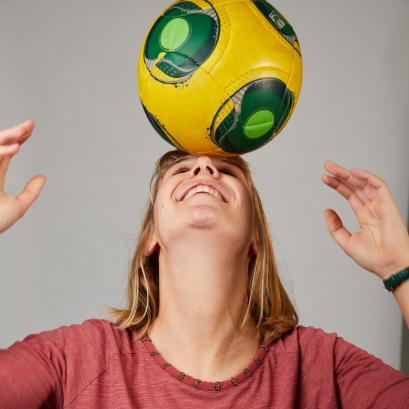
Sofie Smismans ended second for the 'Gaston Beunen' price at the symposium of 'Vereniging voor Bewegings- en Sportwetenschappen' on friday 11/12/2020 with her oral presentation of the study: 'Athletes and the job market: A competitive advantage?'.
Study abstract:
(1) Research Group Sport Psychology and Mental Support, Vrije Universiteit Brussel, Brussels, Belgium
Elite athletes on the job market: A competitive advantage?
Smismans Sofie1, Wylleman Paul1,, De Brandt Koen1, Defruyt Simon1
Introduction: Elite athletes typically retire from sport at a relatively young age which implies that, after their sporting career, most engage in a new professional career. When entering the job market, many athletes rely on the potential transfer of competencies developed throughout their athletic career (e.g., leadership). This study aimed at identifying (1) the competencies athletes perceive as giving them a competitive advantage on the job market, and (2) the matches and mismatches between athletes’ and employers’ perceptions on this potential competitive advantage.
Methods: A mixed-methods approach was adopted, combining the Athletes Competency Questionnaire for Employability (ACQE) and focus groups and interviews. In total, 954 elite athletes (54% active, 46% former) completed the ACQE, consisting of 28 items structured within four higher-order competencies (i.e., Career & Lifestyle Management, Career Communication, Career Resilience, Career Engagement & Flexibility). Participants selected five items they felt (would) give them the biggest competitive advantage on the job market. Second, five focus groups and six semi-structured interviews with 58 employers were conducted on the topic of athletes’ employability. Qualitative data were analysed inductively using thematic data analysis.
Results: Athletes report that they gain a competitive advantage from ‘Career Resilience’ and ‘Career & Lifestyle Management’. Employers largely support the athletes’ perceptions and confirmed that athletes’ strongest competencies can be an added value for their company. A mismatch between athletes’ and employers’ perceptions was identified for ‘Career Communication’. While employers view athletes as strong communicators and networkers, athletes indicated that building a professional network is their greatest weakness.
Conclusion: This is the first study to identify and compare athletes’ and employers’ perceptions regarding employability. Findings highlight that, in addition to developing facilitating structures, employers and career support providers should focus on assisting athletes in developing competencies to maximize their chances on the job market.
More info? Contact Sofie Smismans
